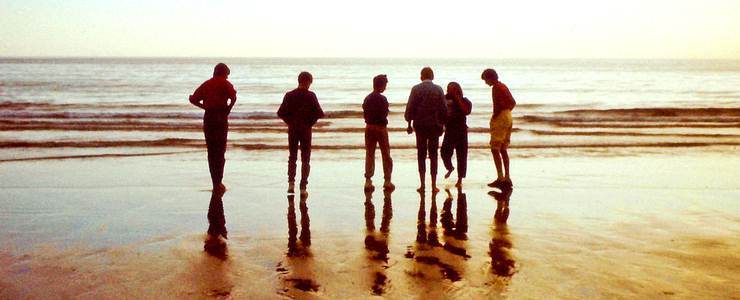source: www.youthwork-practice.com | 2000 Games, Devotions, Themes, Ideas and more for Youth Work
only for private using
Phases and reactions during puberty
The changing phases: physical, psychological and their social behaviours As if the mental changes during puberty were not enough, the body is also accompanied by various uncertainties, which are often difficult to deal with for those affected. The young person goes through considerable changes. To respond to this different stages of adolescence correctly, one needs to understand those stages first. Both in physical, mental and spiritual terms – and that in boys and girls alike.
Stages of puberty
Basically, adolescence is divided into three phases. The ages mentioned here are not fixed, as they differ between the sexes as well as from individual to individual. This means that the phases of puberty may occur earlier or later in individual children or youth; or may last longer.
Phase 1

As if the physical changes within puberty were not already enough,
it is the psyche, which also changes to a considerable extent.
©: jogyx - Fotolia
At the age of 10-12, the first physical changes become visible. The physical changes are unsettling to the youth and a sense of shame sets in. In their social behaviour, the children begin to distance themselves from their parents. Tantrums may happen more often.
Phase 2
At the age of 13-15 years, boys experience the first ejaculation, girls, their first menstruation. It is not uncommon that young people struggle with skin problems like acne. Uncertainty, self-doubt, inferiority complex, easily being hurt – all those things take a toll on the young person. The boys try to find their own limits while girls are more concerned with their physical appearance. Provocations, altered with a retreat from the parents are likely.
Phase 3
The body has now fully developed. Appearance takes a high priority. The first sexual contacts are developing. The search for identity, for a career and personal goals, as well as the separation of the parents, are in full swing.

Youth in puberty | ©: www.youthwork-practice.com
Typical boys
The typical behaviour of boys during puberty are being super cool, macho appearance and a desire to prove themselves. In many cases, however, the boys are primarily accompanied by uncertainty: Do I come across well? Who am I? How to be a man – while at the same time not up to the stereotypical requirements.
Typical Girls
In girls, we see similar uncertainties. However, they are not covered with a cool appearance, but rather through looking good. The girls are more emotional, looking for a more feminine appearance.
Reactions of the parents
Parents react differently to the "strange" behaviour of their children. Sometimes their responses are one of helplessness, sometimes totally out of place. Responses which are helpful and supporting to the young person during this difficult phase in life are rather slim. However with a little bit self-control it can work.
Tips for youth work
In most cases, the young person will not just find peers in the youth group but also a youth worker to confide. All they want is to be taken seriously and appreciated whenever this is possible. The youth leader is required to have a precise approach, but also show understanding and openness.
Next chapter: Puberty Phase 1: 10-12 years
[ © www.youthwork-practice.com | 2000 Games and Ideas for Youth Work ]






